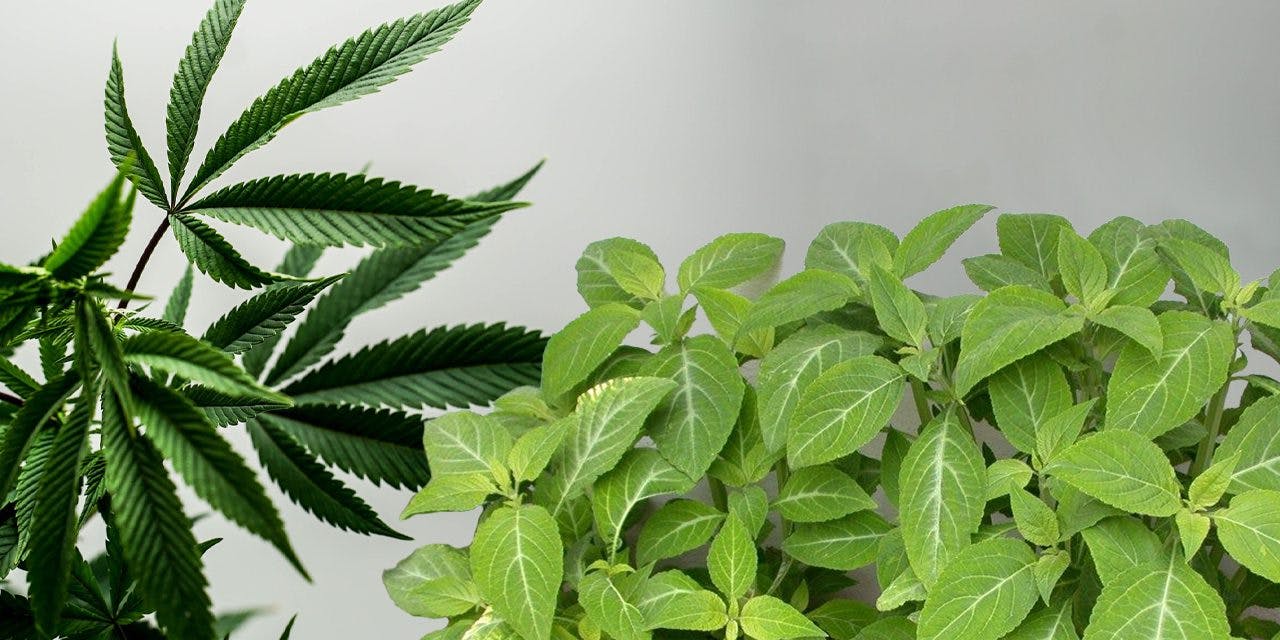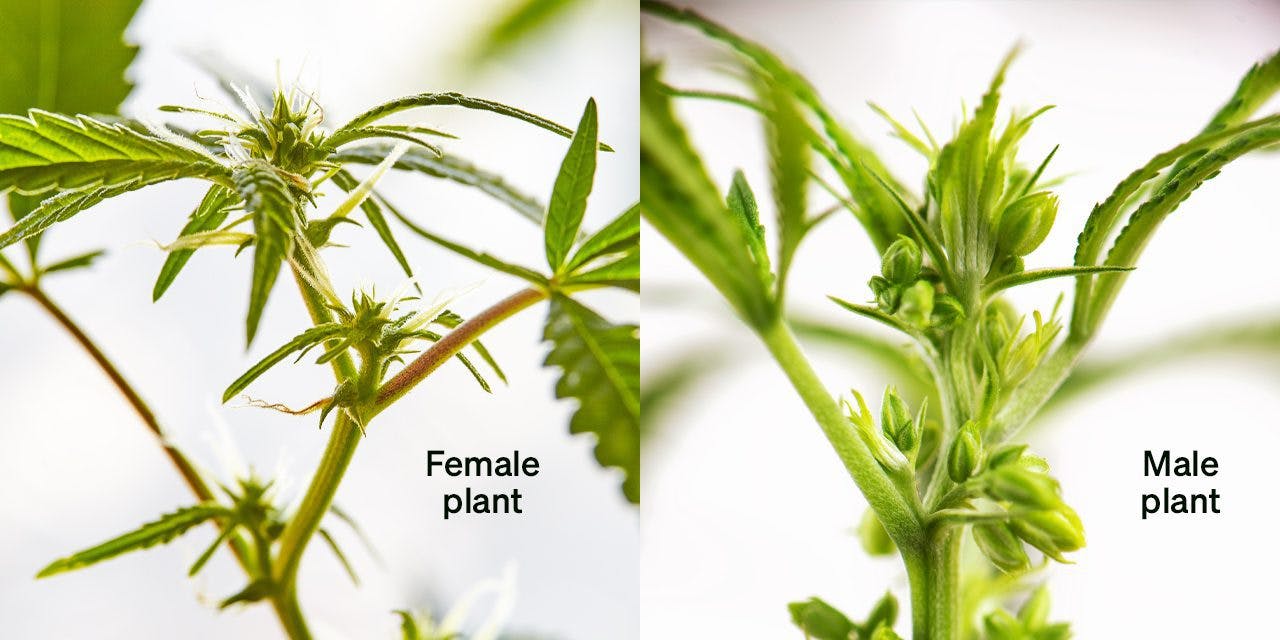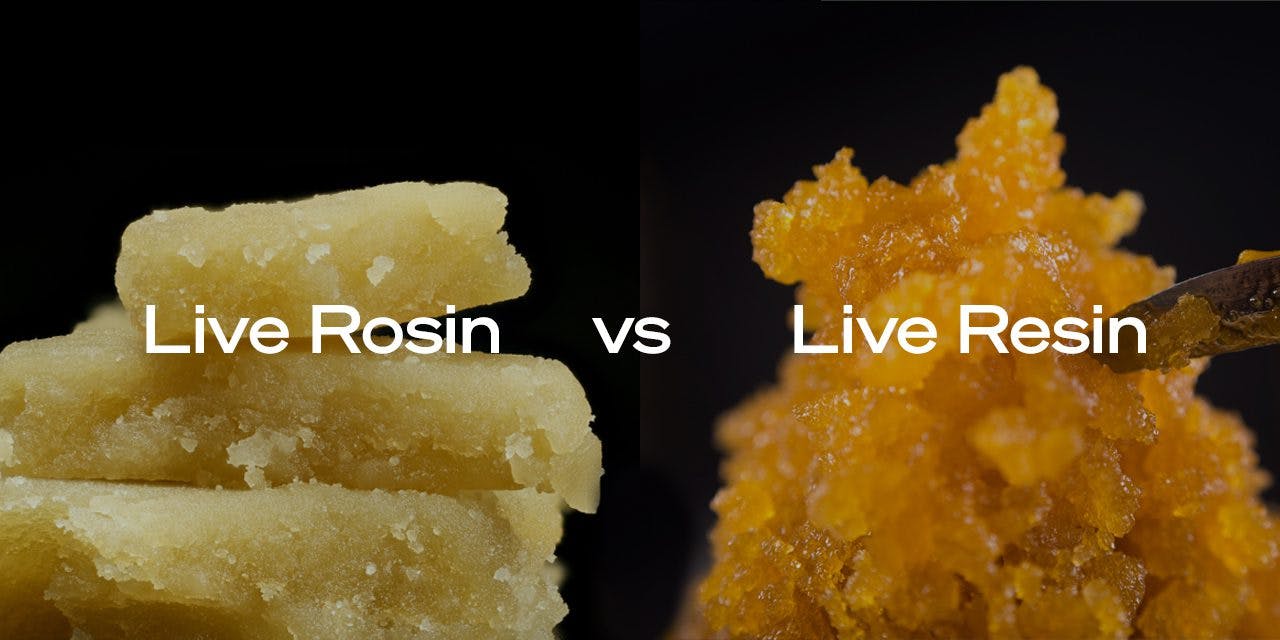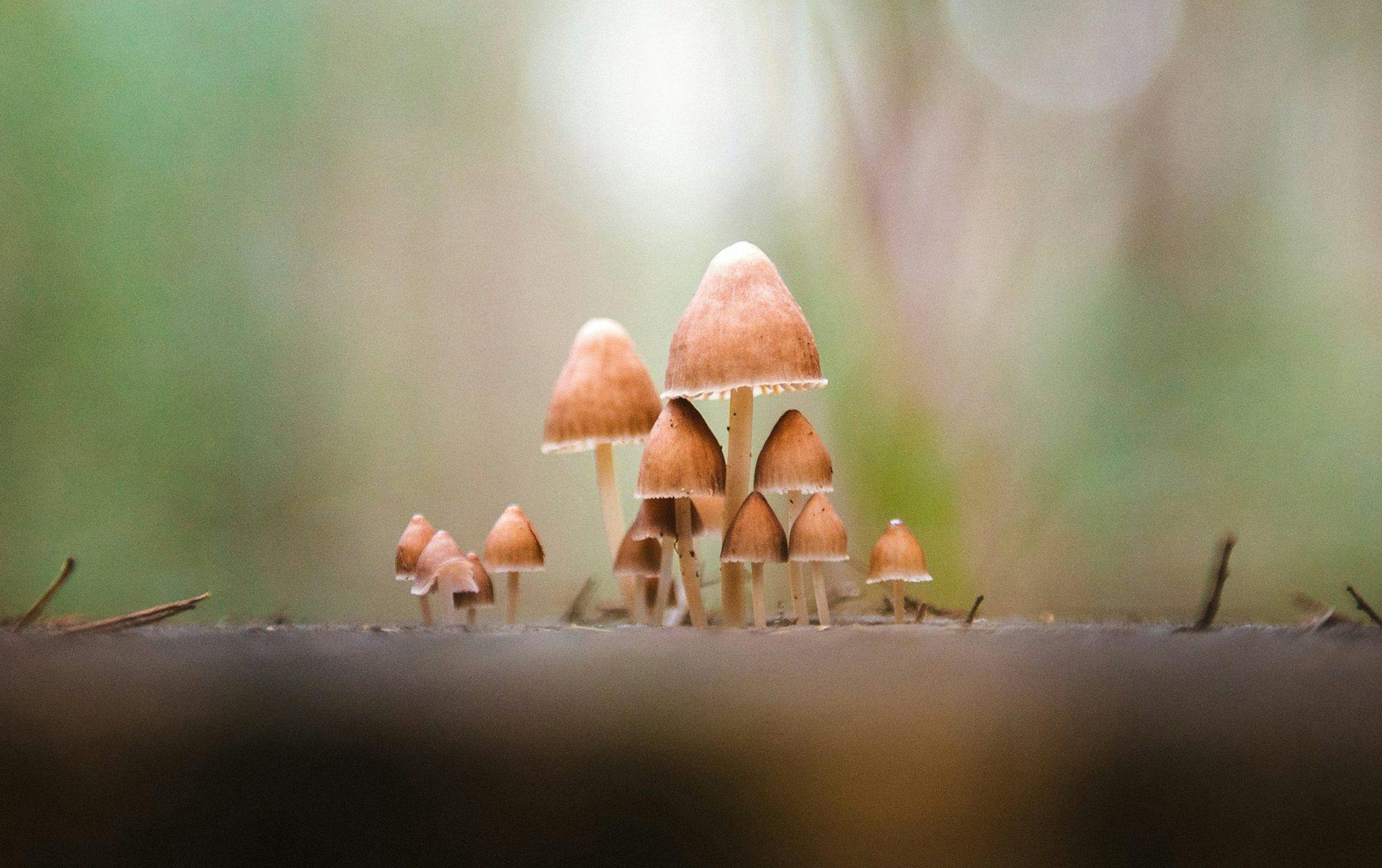Salvia vs. Weed: Similarities and Differences

Article written by

Dipak HemrajHead of Research and Education
Content reviewed by

Dr. Lewis JasseyMedical Director - Pediatric Medicine
The main difference between weed and salvia is the different effects each has on the body. Although both are dried herbs and are most commonly smoked, they both cause very different experiences and are used for different purposes.
While marijuana is often used to calm anxiety and promote an overall sense of well-being, salvia induces an often chaotic, nonsensical, and sometimes distressing hallucinogenic state.
Get Your Medical Card
Connect with a licensed physician online in minutes.
What Is Salvia?
Salvia divinorum, often shortened to “salvia,” is a member of the sage family. It is also occasionally referred to as “magic mint,” but although technically a member of the mint family, salvia is more closely related to edible sage (S. officinalis). Other names for salvia include “diviner’s sage,” “sage of the seers,” and “Lady Salvia.”
Salvia leaves contain an exceptionally potent, naturally occurring hallucinogen called salvinorin A. It has a long history of usage by the Mazatec — an indigenous people in Oaxaca, Mexico — where it is referred to as “ska Maria pastora.” This roughly translates into English as “leaf of the shepherdess Mary.” The herb is revered as both a medicine and a spiritual substance.
Recently, salvia has begun to acquire a reputation as a recreational psychedelic. Although some users enjoy the psychoactive effects of saliva, one study found that many users try it no more than twice and then do not repeat the experience.
How It Works
The active ingredient in salvia is salvinorin A, which binds to opioid receptors in the brain. It’s most commonly introduced to the body by burning the plant’s dried leaves and inhaling the smoke. This provides a rapid onset of strong hallucinogenic symptoms, beginning within seconds and diminishing in strength over the following 30 minutes.
Alternatively, tea from the dried or fresh leaves of the plant can be made, which produces a slower onset of symptoms and a longer-lasting, less intense high.
Uses
Salvia is studied as a potential painkiller, anti-seizure medication, and antidepressant. Salvinorin A also shows potential in helping treat substance abuse. However, salvia is yet to pass any clinical trials and gain approval as a medication, and the long-term effects of salvia on the body are unknown.
For the Mazatec people, however, salvia has been used medicinally for centuries. They also use it as a part of a spiritual experience in which they attempt to understand themselves and their surroundings. It allows for new perspectives on existing situations, which some users find helpful in solving problems. A shaman guides these sessions, and the salvia is not smoked; its leaves are chewed.
Outside of Oaxaca, Mexico, salvia is used a bit differently, and it is used recreationally for its hallucinogenic effects.
Potential Benefits
Users may find salvia’s psychedelic perspective shift helpful in solving personal and interpersonal problems and improving self-awareness. Some users self-medicate with salvia to reduce symptoms of anxiety, depression, and other mental health challenges, but these effects and uses are anecdotal.
Despite salvia’s hallucinogenic effects, it’s important to remember that it’s very different from other hallucinogens like psilocybin mushrooms or DMT, as it has dissociative effects and does not bind to serotonin receptors. Its therapeutic potential, therefore, differs from those associated with other “classic” hallucinogens.
Potential Risks and Drawbacks
Salvia is not guaranteed to provide an enjoyable experience. In some cases, users will find themselves in a nonsensical mental state of fear and anxiety. Salvia also influences the perception of time, meaning that although only a few minutes may pass in the real world, the user may experience a much longer time under its effects.
Similarities and Differences Between Salvia and Weed
Both salvia and cannabis are most commonly consumed by smoking dried plant material, and both can alter a user’s perception of reality and may be used recreationally or medicinally. However, the two have very little in common in any other respect.
How to Spot the Difference
The most reliable way to tell the two apart is by smell: Cannabis has a very distinctive, often pungent scent, whereas salvia has a weaker aroma closer to dried herbs.
What Does Salvia Look Like?
Salvia is the dried leaves of the plant S. divinorum. It looks like crushed, dried leaves, is not sticky or resinous, and does not have a strong aroma.
What Does Weed Look Like?
Weed is the dried flower buds of the cannabis plant. It looks like a clumped-together mass of plant tissue. Cannabis buds may be sticky to the touch and have a distinctive aroma.
Download A Free Guide to Medical Marijuana
The Bottom Line
Salvia and weed are two very different substances with different effects. Experience with smoking marijuana does not confer experience in smoking salvia, and salvia usage should be approached with caution. The two do not share any proven health benefits or medicinal applications.
Get Your Medical Card
Connect with a licensed physician online in minutes.
Frequently Asked Questions
Why is salvia legal but weed isn’t?
Marijuana is a popular recreational drug with widespread use across the United States. People who have tried marijuana are often open to trying it again, leading to common usage on an individual and societal scale. The similarity between marijuana usage and drug abuse has historically led many health officials and the drug enforcement administration to be concerned about the potential effects of marijuana on society, leading to marijuana being classified as a Schedule I substance in the U.S. Although the effects of marijuana are well studied and somewhat predictable, consuming salvia results in very subjective effects that often cannot be well predicted. Salvia use does not promote an overall sense of well-being and is usually unpleasant for the user, with one study reporting that 51% of users say they would not try the drug again. Recreational users of salvia do not use the drug very often, so until recently, the drug has mostly escaped notice by legal authorities.
Can you mix marijuana and salvia?
Mixing psychoactive drugs is never a good idea as this can lead to unexpected side effects. As marijuana and salvia can cause anxiety and paranoia, it is very inadvisable to mix the two as the resulting mental state could be extremely distressing and potentially harmful.
Are salvia and “spice” the same thing?
No, “spice” and salvia are two very different drugs. “Spice” is a form of synthetic marijuana designed to mimic the effects of THC. Salvia refers to the dried leaves of S. divinorum. Spice is considered dangerous and is a Schedule 1 drug



